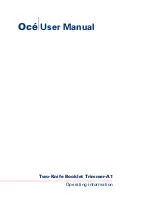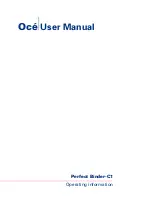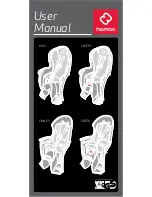
9
MN-753
Air Lift 1000
MAINTENANCE GUIDELINES
By following these steps, vehicle owners will obtain the longest life and best results from their
air springs.
1. Check the air pressure weekly.
2. Always maintain normal ride height. Never inflate beyond 35 PSI (2.4BAR).
3. If you develop an air leak in the system, use a soapy water solution to check all air line
connections and the inflation valve core, before deflating and removing the spring.
4. When increasing load, always adjust the air pressure to maintain normal ride height.
Increase or decrease pressure from the system as necessary to attain normal ride height
for optimal ride and handling. Remember that loads carried behind the axle (including
tongue loads) require more leveling force (pressure) than those carried directly over the
axle.
FOR YOUR SAFETY AND TO PREVENT DAMAGE TO YOUR VEHICLE, DO NOT EXCEED
MAXIMUM GROSS VEHICLE WEIGHT RATING (GVWR), AS INDICATED BY THE VEHICLE
MANUFACTURER. ALTHOUGH YOUR AIR SPRINGS ARE RATED AT A MAXIMUM
INFLATION PRESSURE OF 35 PSI (2.4 BAR), THE AIR PRESSURE ACTUALLY NEEDED
IS DEPENDENT ON YOUR LOAD AND GVWR.
5. Always add air to the springs in small quantities, checking the pressure frequently. Cylinders
require less air volume than a tire and inflate quickly.
6. Should it become necessary to raise the vehicle by the frame, make sure the system
is at a minimum pressure (5 PSI [.34 Bar]) to reduce tension on the suspension/brake
components. Use of on-board leveling systems do not require deflation or disconnection.
OPERATING TIPS
1. Inflate your air springs to 30 PSI (2.1BAR) before adding the payload. This will allow
the air cylinder to properly mesh with the coil spring. After the vehicle is loaded, adjust
your air pressure down to level the vehicle and for ride comfort.
2. When carrying a payload it will be helpful to increase the tire inflation pressure in
proportion to any overload condition. We recommend a 2 PSI (.1BAR) increase above
normal for each 100 lbs. additional load on the axle.
TROUBLESHOOTING GUIDE
1. Leak test the air line connections.
2. Inspect the air lines to be sure none are pinched. Zip ties may be too tight. Loosen or replace
the tie and replace leaking components.
3. Inspect the air line for holes and cracks. Replace as needed.
4. Look for a kink or fold in the air line. Reroute as needed.
If the preceding steps do not solve the problem, it is possibly caused by a failed air spring — either
a factory defect or an operating problem. Please call Air Lift at (800) 248-0892 for assistance.
NOTE
Product Use, Maintenance and Servicing
5 PSI (.34BAR)
35 PSI (2.4BAR)
FAILURE TO MAINTAIN CORRECT MINIMUM PRESSURE (OR PRESSURE
PROPORTIONAL TO LOAD), BOTTOMING OUT, OVER-EXTENSION OR RUBBING
AGAINST ANOTHER COMPONENT WILL VOID THE WARRANTY.
Maximum Air Pressure
Minimum Air Pressure
CAUTION
Содержание Air Lift 1000 60818
Страница 2: ......
Страница 15: ...13 MN 753 Air Lift 1000 Notes...
Страница 16: ...14 MN 753 Air Lift 1000 Notes...
Страница 17: ...15 MN 753 Air Lift 1000 Notes...




































